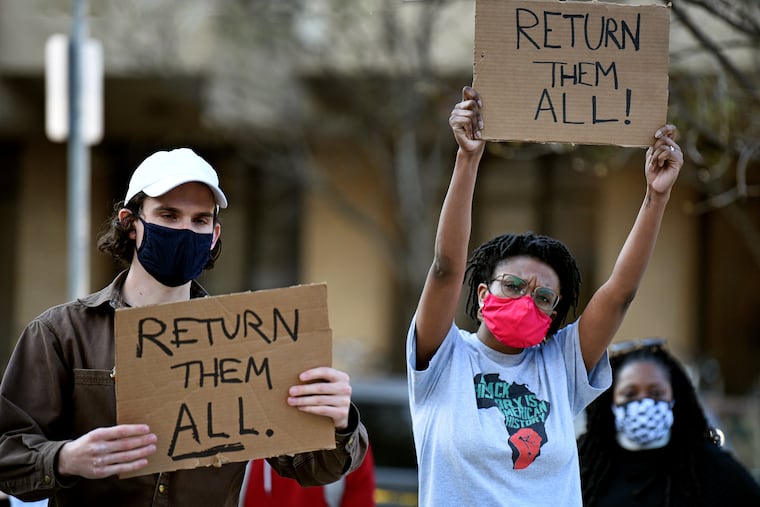Penn Museum has identified 20 skulls of Black Philadelphians from its collection of 1,300 remains
The institution has announced plans to bury the human remains.

The count of Black Philadelphians whose skulls were amassed by the white supremacist doctor Samuel George Morton and held at the Penn Museum of Archaeology and Anthropology has grown.
Morton, a craniologist who graduated from the University of Pennsylvania with a medical degree in 1820 and later became a professor at the school, was influenced by the long-debunked theory of phrenology, which held intelligence was related to skull size. Along with other racist scientists and doctors, he weaponized his collection of skulls robbed from graves and medical institutions serving the poor to justify slavery and falsely claim Black people were biologically inferior to white people.
Penn Museum came to possess the Morton Cranial Collection in 1966. The institution publicly initiated its ongoing efforts to bury or repatriate the remains in 2021, after the social movement against racist harm became more mainstream across the nation and on campus in the summer of 2020. Initially 13 skulls of Black Philadelphians were identified. But in a report released Tuesday, the museum said there are 20.
Penn Museum researchers working to identify the remains in preparation for their proposed burial have said that none of the remains of the 20 Black Philadelphians they have identified show signs of previous burial. The group consists of 12 Black women and eight men. The newly identified Black Philadelphians represent just 1.5% of the total collection of 1,300 remains. Research by Penn Ph.D. candidate Paul Wolff Mitchell identified more than 30 Philadelphians total, both white and Black.
“In the interest of continued transparency regarding the 20 Black Philadelphians that are proposed for burial, we want to present all available data to the public,” said Christopher Woods, the museum’s director and the first Black person to lead the institution, one of the nation’s premier anthropology museums. “Although the 19th-century archives were publicly available for decades, the reports present the information in a more accessible way.”
Philadelphia activist Abdul-Aliy A. Muhammad began calling for the repatriation of the Morton Collection in 2019. Muhammad served as a member of the Penn Museum Morton Cranial Collection Community Advisory Group, established to advise the museum on a process of repatriation. In May, Penn filed a petition with Orphans’ Court for permission to rebury the original 13 Black remains at Eden Cemetery.
Muhammad filed an objection soon thereafter, saying Penn was rushing its repatriation process, had failed to adequately get input from descendant communities, and had potentially rushed the research process to identify exactly how many remains belonged to Black Philadelphians. They said the identification of these additional Black Philadelphian crania are a direct result of their objections and another from Rutgers University professor Lyra Monteiro.
“Penn didn’t do this because they had some moral understanding of what was wrong with possessing the remains of our ancestors,” Muhammad said. “They did this in response to the objections to their petition.”
Muhammad said that since Penn perpetuated the harm originally, it should not be stewarding the repatriation process.
Monteiro has worked with Muhammad on confronting the Penn Museum’s Morton Collection repatriation efforts. She said she was angry to learn that Penn identified additional Black Philadelphians in the collection. An anthropological archaeologist and historian, Monteiro believes there may be more.
“It is the height of disrespect for the dead to not have done the research before taking the next step,” Monteiro said of Penn.
She also acknowledged the power of Penn Museum’s decision to repatriate the collection.
“I don’t know of a single museum anywhere on the planet that has actually done that, in terms of international repatriation,” said Monteiro.
However, she continued, the museum’s handling of Black Philadelphian remains is troubling. “Will this set a precedent for what they do with everyone else’s ancestors as well?”
Both Muhammad and Monteiro said they believe that to properly repatriate and honor the people whose remains are in the collection, institutions should try to find next of kin when possible. Penn Museum, Monteiro said, should not be trusted to handle the repatriation and reburial of the Morton collection and the institution should give control to descendent community members.
A hearing regarding Penn Museum’s petition to repatriate the Black Philadelphian remains is scheduled for Feb. 2.